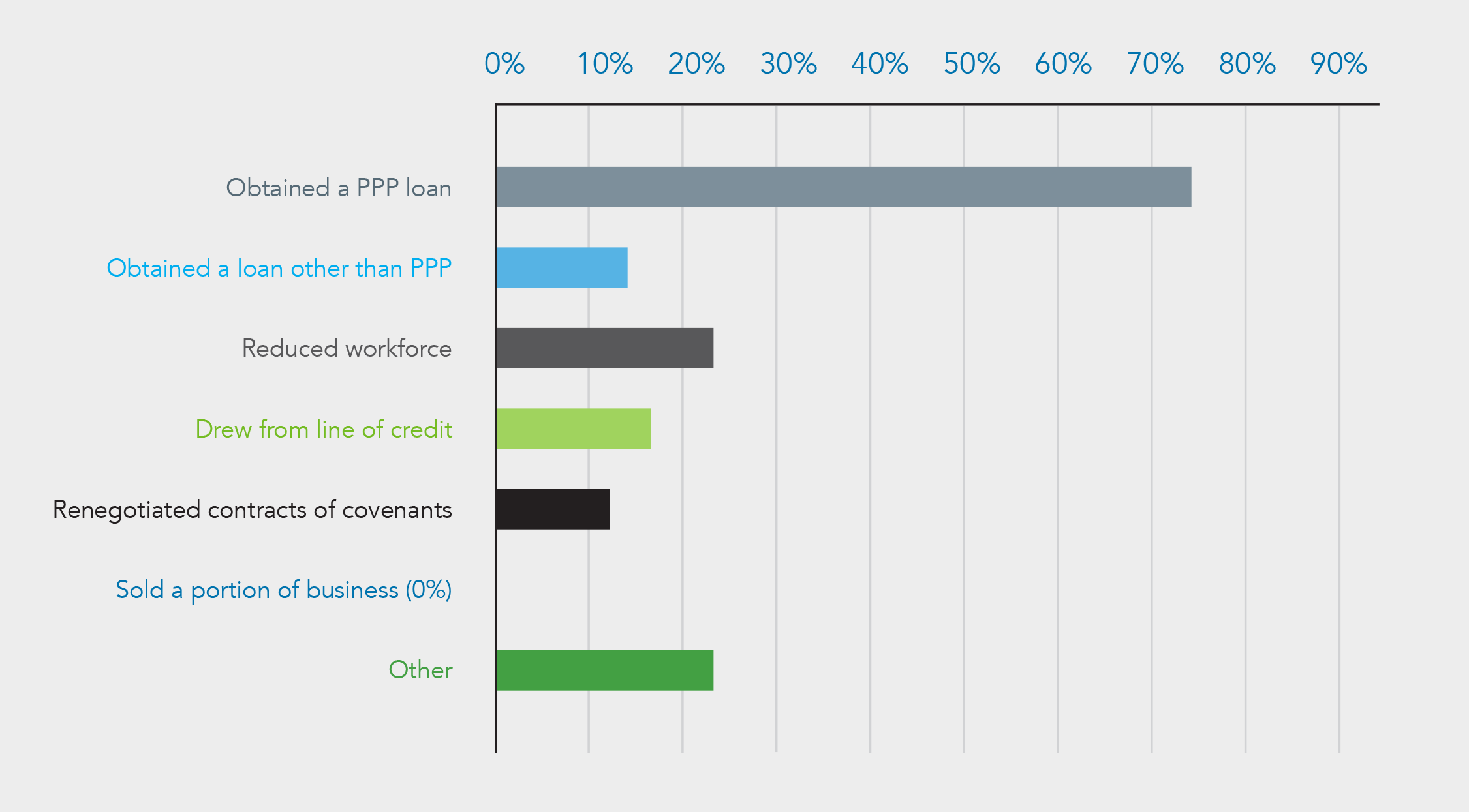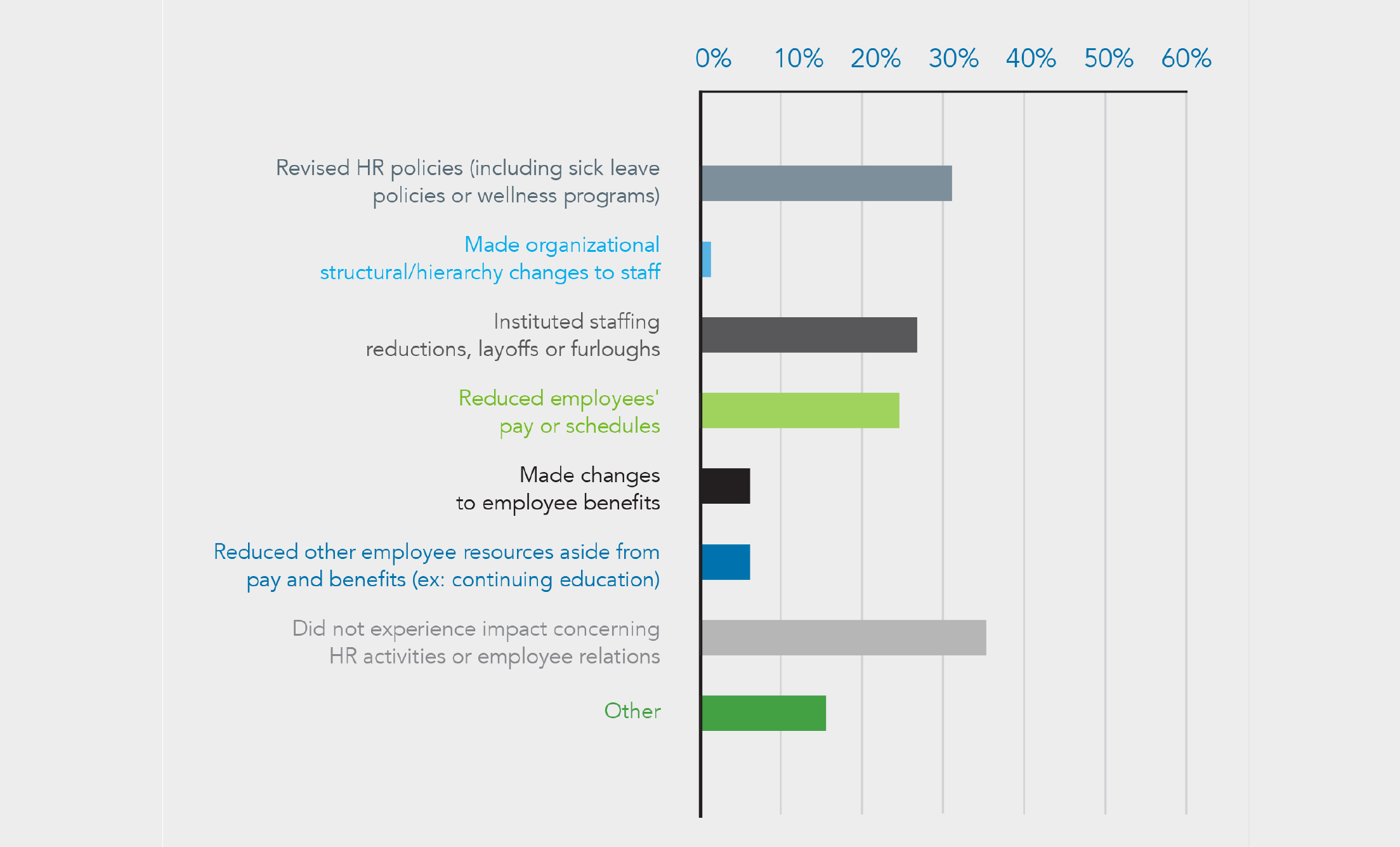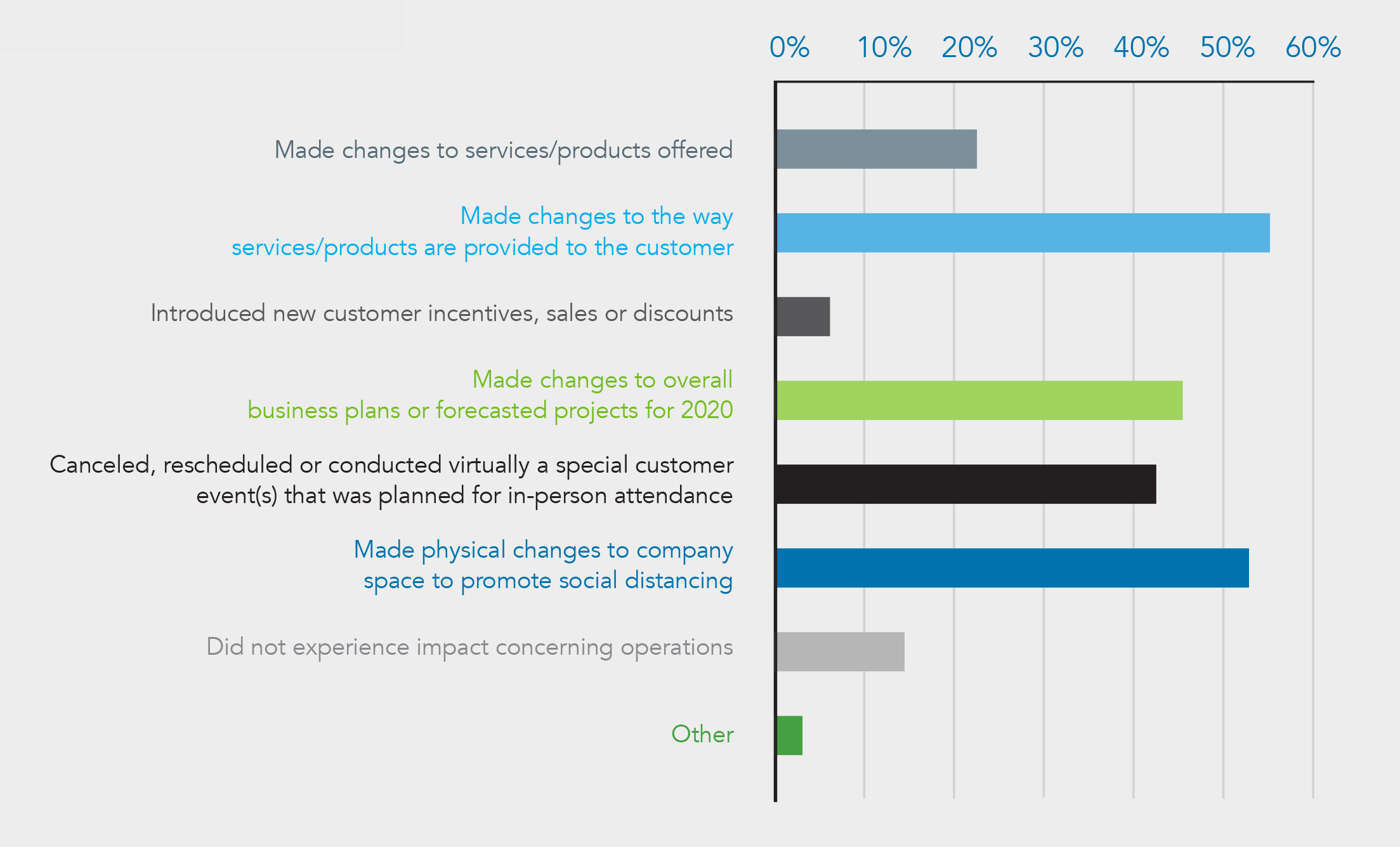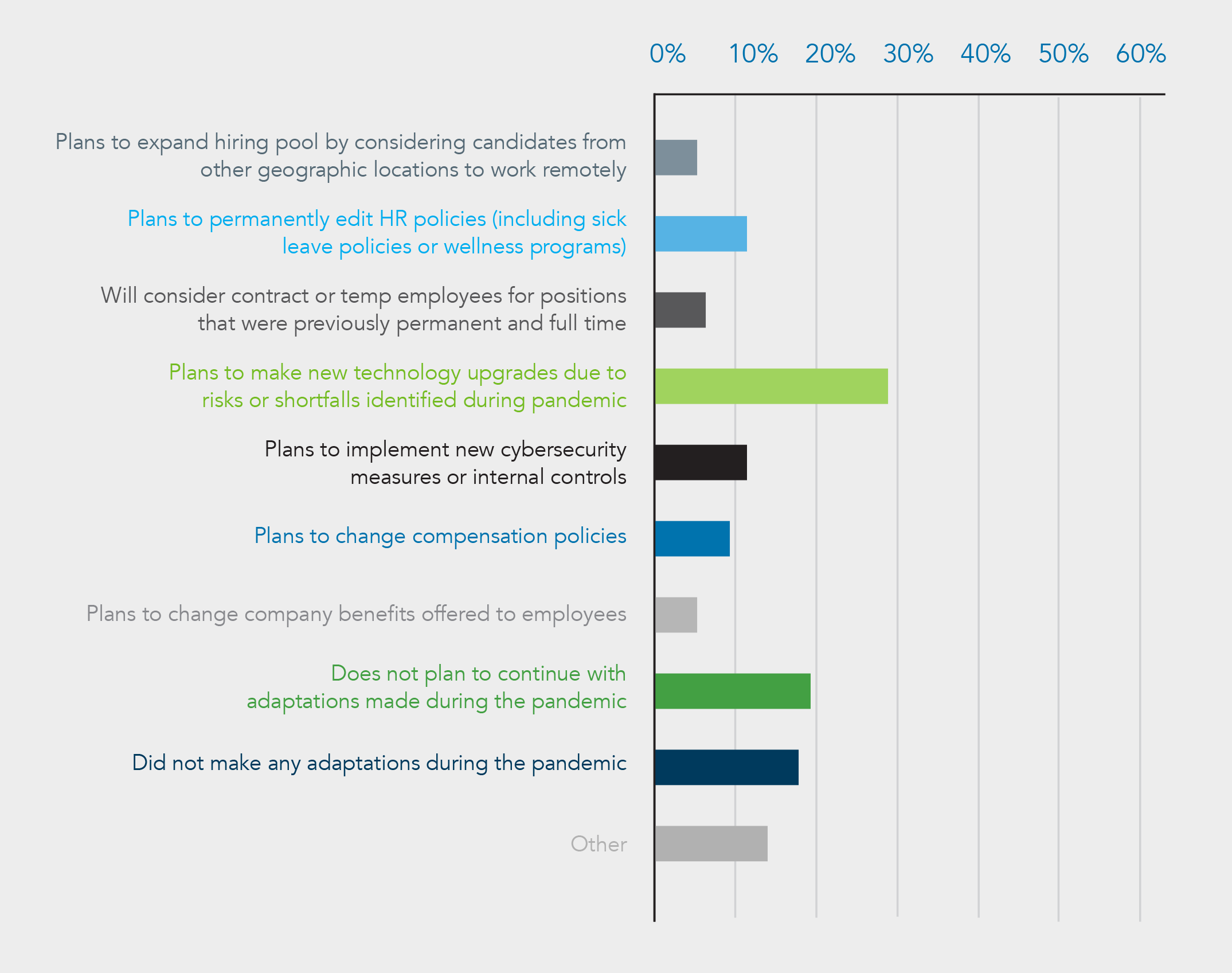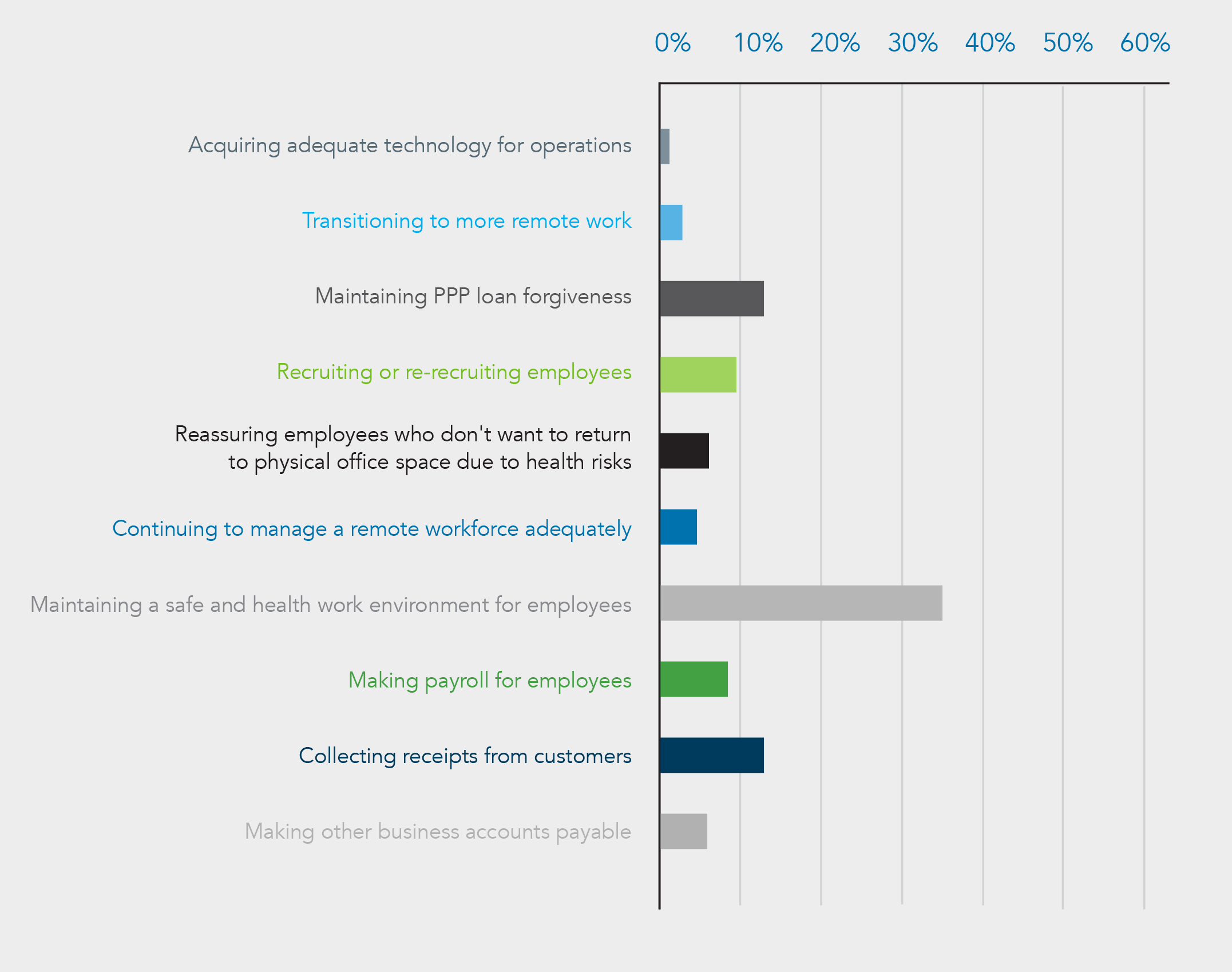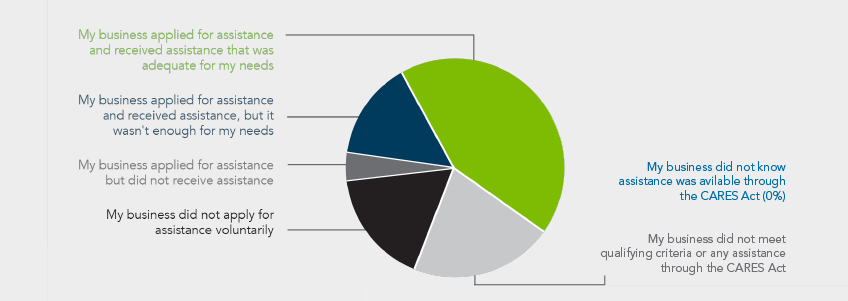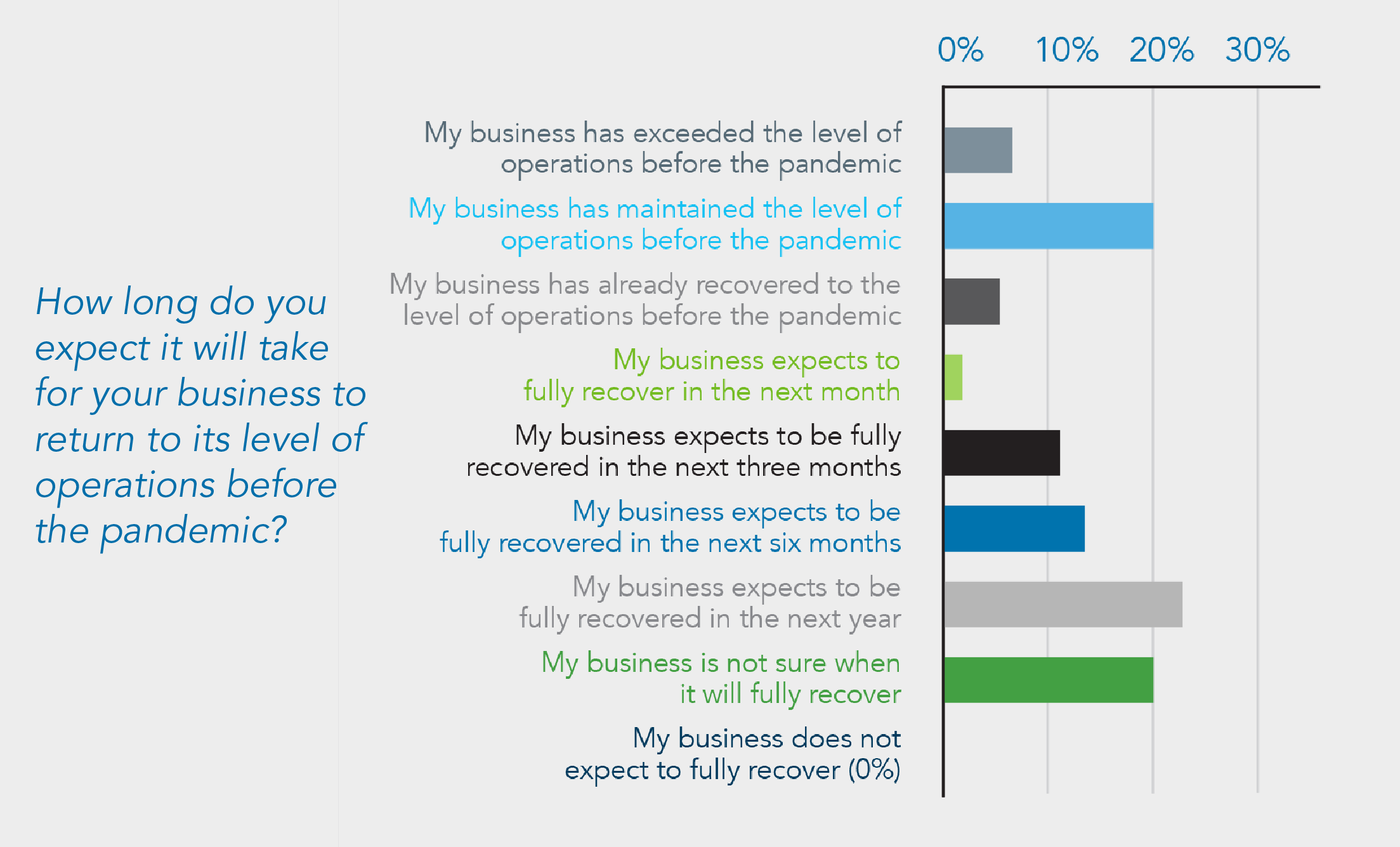
While the novel coronavirus has no doubt brought hardship to businesses in the recent months, and while it’s true that each business has had different challenges, many seem to have adapted well.
Regional Observations
We must recognize that a majority of the survey’s respondents are located in the Southeast region of the country, and the information in the responses reinforces the situations we have seen in this region. The information from these survey respondents may not reflect the situations in different parts of the country due to varying industries, job composition and state-imposed regulations. Businesses in different parts of the country faced differing challenges, and we believe that much of the information within represents that of the Southeast.
Paycheck Protection Program
The PPP has no doubt been extremely helpful to businesses. The stimulus package allowed businesses the time to assess their situations in regard to continuity plans and staffing before instituting severe layoffs and budget cuts. This time was not only valuable to the businesses who received the funding, but to the employees who were retained on payrolls.
As of the date of this report, Congress is working on another stimulus package that will reportedly allow certain businesses to apply for another round of Paycheck Protection Program (PPP) funding. However, only businesses that meet a decline in revenue test, to be determined, are expected to be eligible. Congress continues to consider ways to simplify the forgiveness process for certain borrowers, but nothing has been finalized yet.
Human Resources
The Coronavirus has brought about numerous changes in the way businesses manage their employees. Employers are now considering how to manage a remote workforce and how to invest in technology to allow for that capability. For many employers, remote work will be a new way of operating, and it brings challenges of staying connected with employees.
Many employers are offering additional paid leave or are considering revising sick leave policies in light of the pandemic. The demand for mental health benefits and employee assistance programs for employees and their dependents need to be on the discussion board as we move forward. Employers and employees should prepare for benefit costs for 2021 and review ways to cut costs, while also preserving the most important part of being a good employer.
The Future
As we continue to progress into uncertain times, even though many companies have already recovered or are quickly moving toward recovery, none of us know for sure what the future will hold. If the trajectory of recovery continues, we expect businesses to show resiliency based on the results of this survey. If it doesn’t, and cases rise and states begin to close again, we would hope that Congress would act with appropriate relief for businesses.
